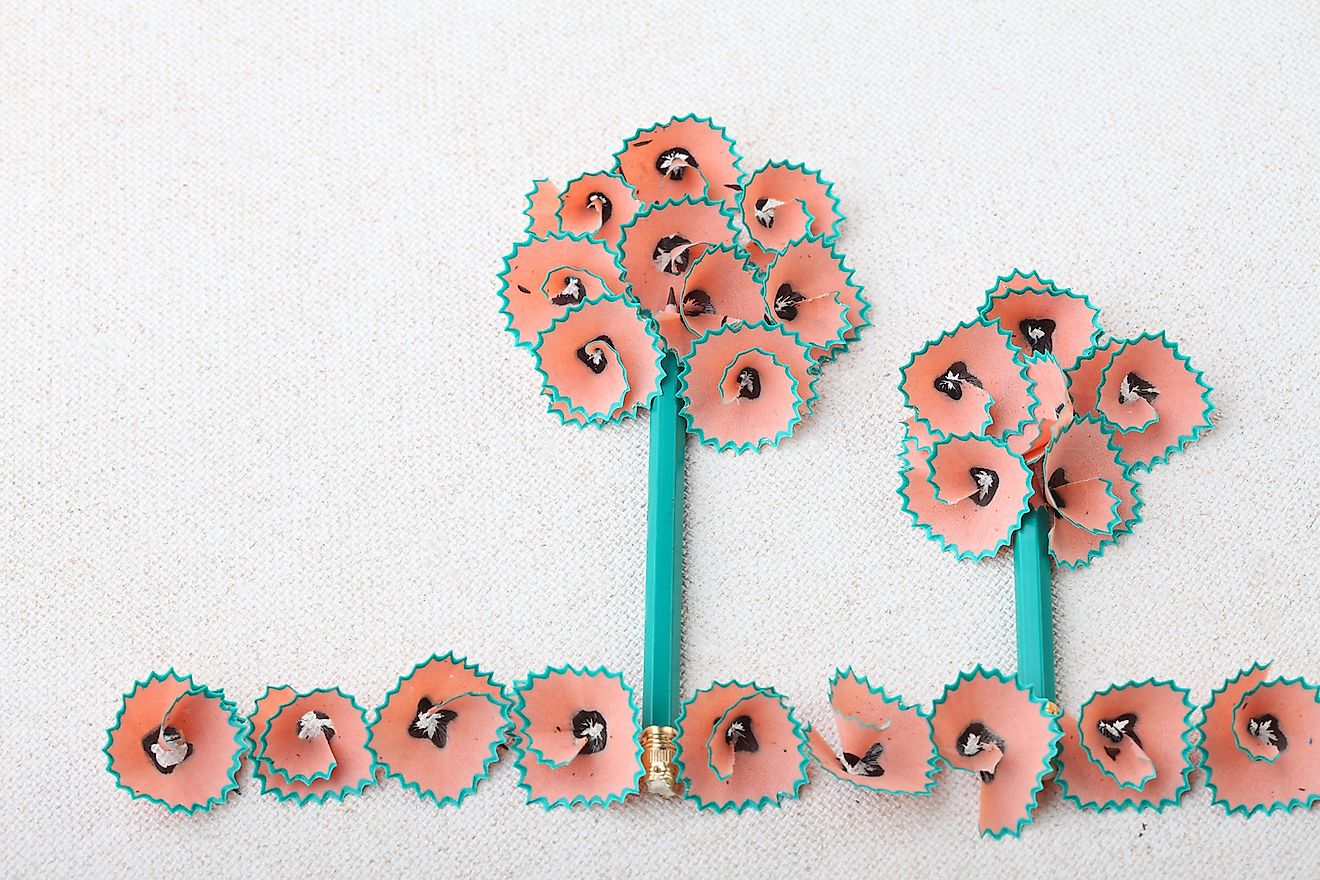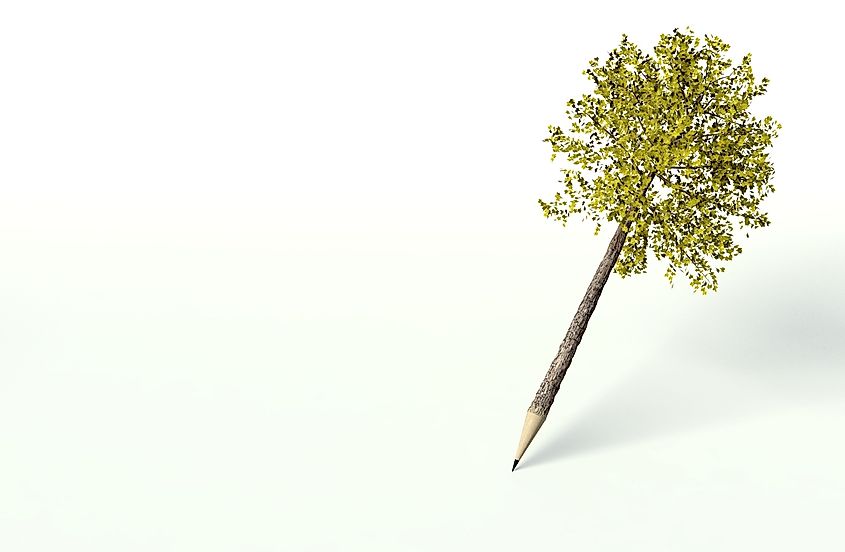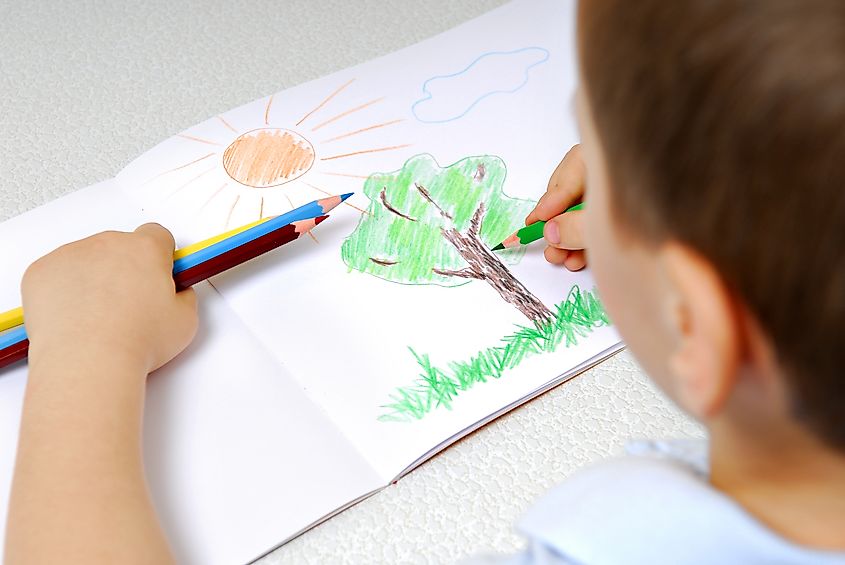How Many Trees Are Cut Down Each Year To Make Pencils?

- 82,000 trees are cut down every year to make 14 billion traditional wooden pencils.
- Nicolas-Jacques Conté, an officer in Napoleon's army, invented the modern pencil by combining graphite and clay for lead durability.
- Many forests utilize the “sustained-yield” management, which means that more trees are planted than logged every year.
More schools in the world are becoming digitalized, but there are still places in the world that heavily depend on the wooden pencil for adequate learning. There are also those artists, draftsmen, businessmen and architects that prefer to jot down their ideas and draw designs, the traditional way. The production of wooden pencils takes a toll on the world's forests, with 82,000 trees cut down each year to make 2 billion traditional wooden pencils, as each tree yields about 170,000 pencils. However, until something that is equally convenient is invented, wooden pencils will continue to be used by kids learning to write, and by others - out of easy availability.
History of the Wooden Pencil
The earliest writing utensil was a metal rod called a Stylus, used by the Romans to make evident scratches in message forms. Soon, it was replaced by lead - favored for its ability to leave real scribbles on the papyrus. The first ancestor to more familiar pencils was invented in 1654, after the discovery of graphite abundance, in Borrowdale, England. The graphite’s advantage of producing thick lines on paper was also its drawback, in that it was too soft for comfortable usage. While wrapping the lead in string did not prove to be the most practical solution, inserting it into wooden holders, solved the problem. In 1662, Nuremberg became the first city in the world to mass produce these early wooden pencils.
Over one hundred years later, in 1795, an officer in Napoleon’s army, Nicolas-Jacques Conté, optimized the wooden pencil further: by combining graphite with clay, he exponentially improved the lead's durability, also opening up for possibilities of various designs in modern pencils.
Making the Pencil

Pencil casings are made out of softwood, harvested from the trunks of coniferous trees, such as pines, spruces, and cedars, with the latter being most commonly used in the pencil production industry today. The cedar tree needs to be at least 14 years old, before being felled, logged, and cut into 7.5 inch - the length of a pencil - blocks. After getting cut into even thinner “slats” (able to fit each other, like blinds or egg cartons), they are engraved with nine slots each, filled with glue, and fitted with hardened pencil rods from the oven. Another slat is placed on top, acting as a casing to wrap snuggly around the lead. The slats are then heated and pressed together, becoming one long sandwich, which is cut into 9 individual pencils.
A large percentage of cedar wood designated to pencil-making for distribution around the world is grown in Sweden and South Africa.
Biggest Consumers

Not surprisingly, schools are among the biggest consumers of “tree products”, including paper and pencils. The usage of wooden pencils decreases with grade-level, when colored pencils disappear from the school bag after primary school, and students voluntarily switch to mechanical pencils in higher grades.
Though imperceptible to some, new school supplies come at a high cost for others. The most unsustainable of them, are the wooden pencils, with their potential lifespan often getting cut short by becoming lost or replaced prematurely.
Many parents are on board with energy conserving designs for new schools and improvements to the old buildings, also praising schools with recycling initiatives. Digital mode is becoming mainstream, where students are able to complete and submit everything online. University students are also choosing to take notes on their laptops, and digital exams are becoming more common. Yet, the production of wooden pencils continues at the same rate, while few attempts at going green with programs that promote re-using school supplies, have not been met with enthusiasm.
Impact On The Environment?
With the environment already facing a myriad of challenges today - from pollution to climate change - in order to avoid pencil-making from becoming another grievance for the nature, many forests are managed on “sustained-yield” basis. Such management describes continuous growth of the forests, where more trees are planted, than harvested for manufacturing purposes, in a span of a year.
Unlike paper products, wooden pencils are easy to substitute, and it would be advantageous for the environment and subsequently, for people's health, if fewer trees were cut down for this sole purpose. Although this kind of thinking inspires innovations and alternative solutions, would trees be planted with the same fervor, if there wasn’t a race in growth versus harvesting?
Alternative Solutions – Are They Better?

The one upside to traditional pencils, is that they are natural, almost 100% biodegradable, and relatively cheap.
More efficient and potentially lasting longer, mechanical pencils are similar in long-term costs to wooden pencils. While mechanical pencils do not involve wood in their production, they take a whole other toll on the environment: from fumes when they are produced, to remaining in the landfill upon disposal. Mechanical pencils that are made from recyclable materials are neither cheap nor available in many parts of the world. Other alternatives that are just as convenient, environmentally friendly, and low cost as wooden pencils are, still need to be invented or not yet popular.
Unfortunately, when that happens, the developing countries will also be the last in line for innovations, and Africa would lose out economically, if wooden pencil production ceases.











